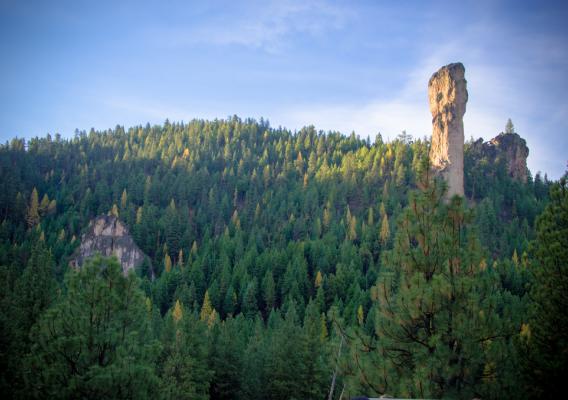
After timber harvest or a forest fire, reforestation is essential for a productive working landscape and healthy ecosystem. When replanting you need to decide where you will get tree seeds or seedlings. To help you and other forest land managers, reforestation scientists at the USDA Forest Service Pacific Northwest Research Station, Oregon State University, and the Conservation Biology Institute developed a web-based mapping application, the Seedlot Selection Tool.
Forests are made up of trees, shrubs, and herbs that are suited to grow well in the local environment. When comparing plants from different forests, scientists have found that plants are genetically different among populations and groupings of related individuals in the same location, and that these differences allow plants to grow well in the local climate. If you plant tree seedlings on your property and they are not suited for the environment on your land, they will not survive or may not grow well.

In order to achieve productive forests with quality timber that promotes a healthy ecosystem, forest landowners and natural resource managers must acquire tree seeds or seedlings that match the local climate in which they are planting. In the past, this has been accomplished by using defined zones (e.g. seed zones or breeding zones) or seed transfer rules that specify an area by geography or climate from which seeds can be moved and will likely grow well. These zones assume that climate will not change over the long-term, which is not likely given current predictions by climate scientists. Future climate predictions indicate changes in local environments will result in the health and productivity of forests declining as climate changes.

The Seedlot Selection Tool uses climate models to define zones based on current and projected climate rather than geography alone. With this tool, forest land owners and natural resource managers can explore options for responding to climate change by determining where seeds or seedlings should be sourced so that they are suited to grow well in the projected future climate. The Seedlot Selection Tool is a web-based mapping application that can be used to map current or future climates based on different climate change scenarios. It is tailored for matching seedlots and planting sites, but can be used by anyone interested in mapping climates defined by temperature and water availability. The Seedlot Selection Tool allows the user to control various input parameters, and can be customized for the management practices, climate change assumptions, and risk tolerance of the user.
Currently, the Seedlot Selection Tool maps the northeastern and western United States including Alaska and work is underway to expand the tool to the southeastern U.S.

